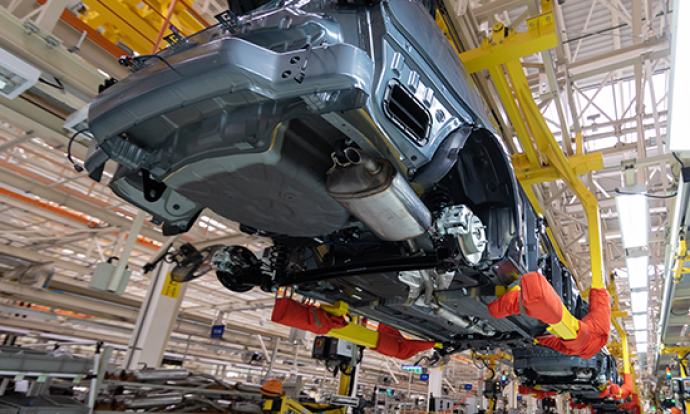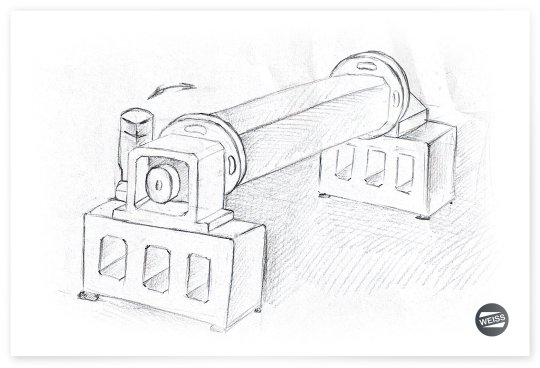Body in White (BIW)

Car Body Manufacturing – Moving Heavy Loads Quickly
When car bodies are manufactured, the components are automatically brought together by various joining techniques such as welding, riveting, clinching, glueing, lasering or soldering. The loads that have to be moved quickly and precisely to the individual manufacturing stations vary with each type of vehicle (2-wheeler, 4-wheeler, truck). WEISS offers customized solutions for every application with the heavy-duty indexers of the CR series and multi-axis systems, often designed especially to fit customer specifications. From the market launch of the first heavy-duty indexer to today, the CR series still sets the standard for an effective balance of dynamics, precision and small size.
Typical Processes
- Spot welding of car body parts, such as doors, engine hoods or entire side panels
- MIG/MAG welding of car body parts or drivetrain parts
- Welding aluminium parts for lightweight construction applications
- Bonding and sealing car body parts such as doors and engine hoods
- Hemming car body parts such as engine hoods
- Optical measurement of car body parts
- Buffer stations for car body parts between each processing station
- Inserting door seals
- Welding battery boxes
- Process and space optimization using a center robot in the middle of the rotary table
- Trunnions to combine the process sequence and workpiece transfer
- Automation in the production of carbon-fiber car body components
- Special applications at universities and research institutes
- Rotation of water tanks for flow and environmental analyses
- Positioning systems for radar measurements
Application Examples

Move Heavy Loads with Precise Positioning
Heavy-duty table CR2000 for holding centered positioned robots

Body Assembly
Horizontal rotary axis for heavy body parts with heavy duty table TH or CR

Workpiece Change during Assembly
Workpiece change and positioning of car body parts with Trunnions
